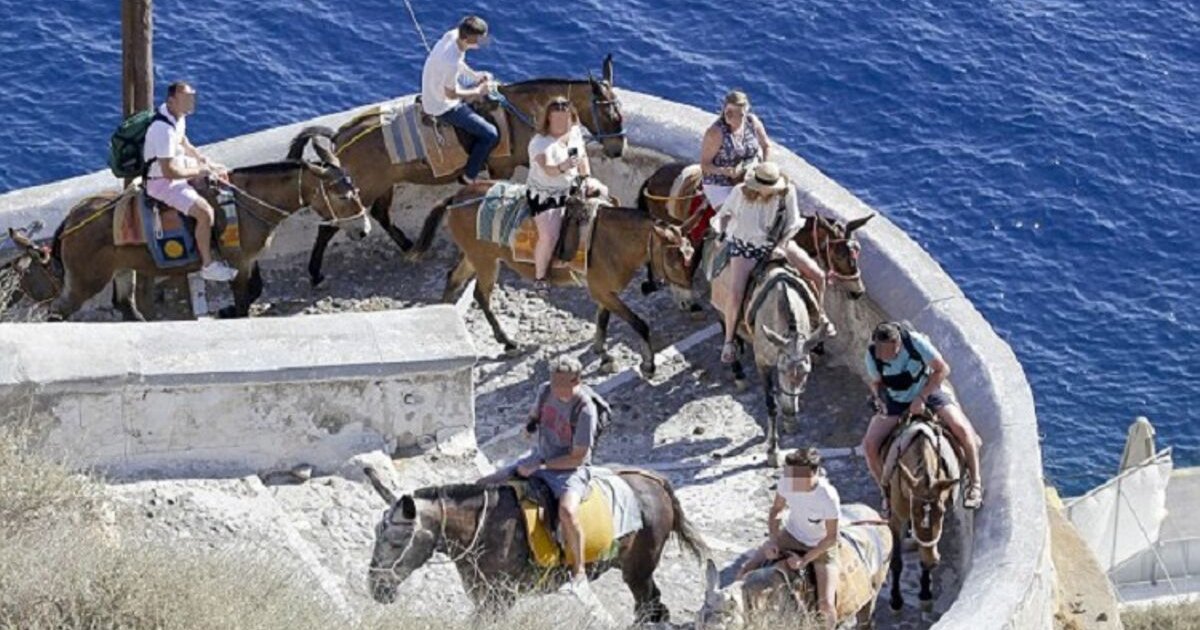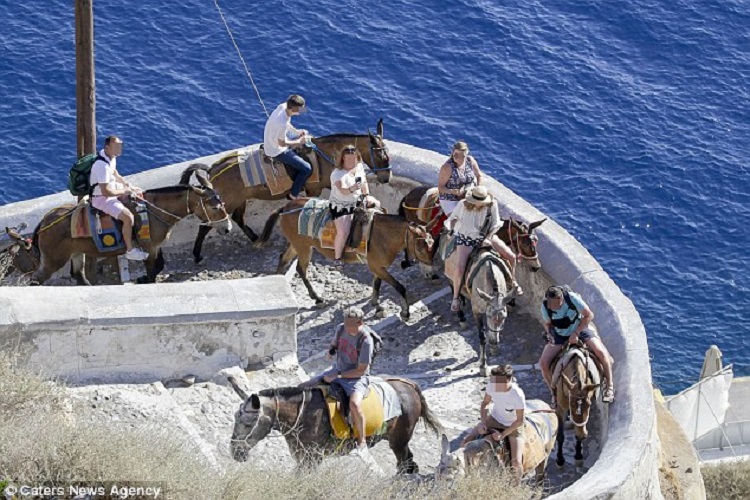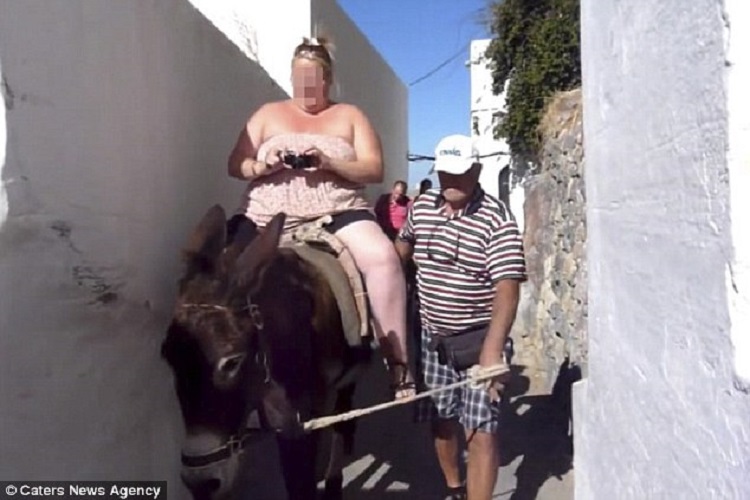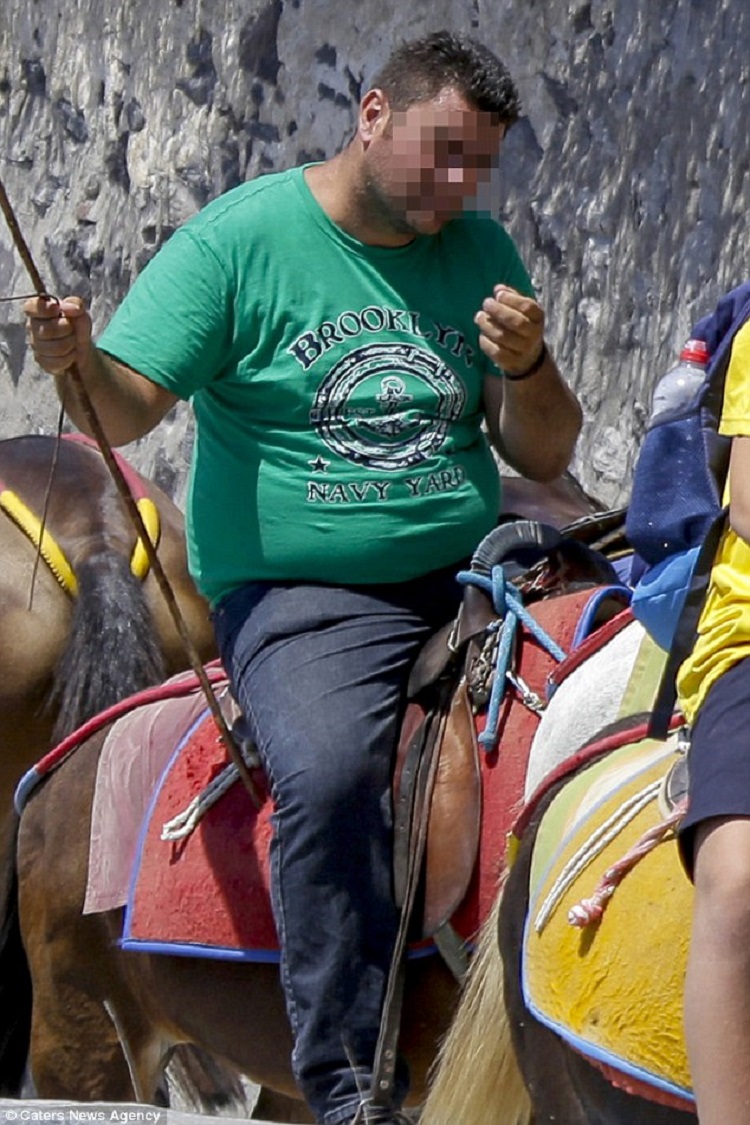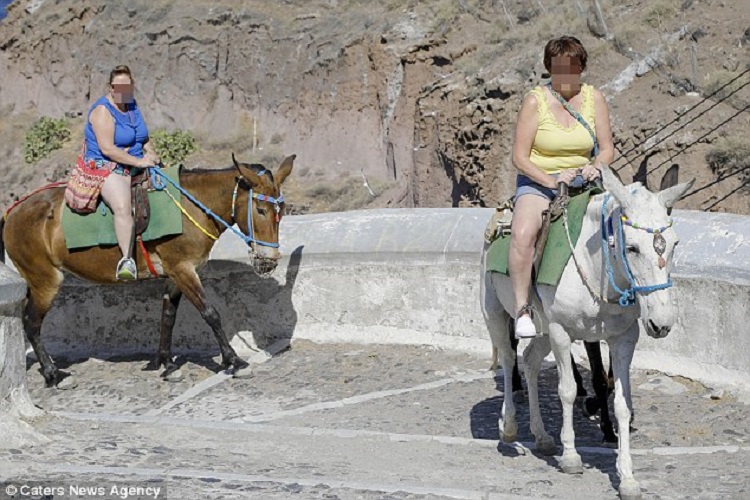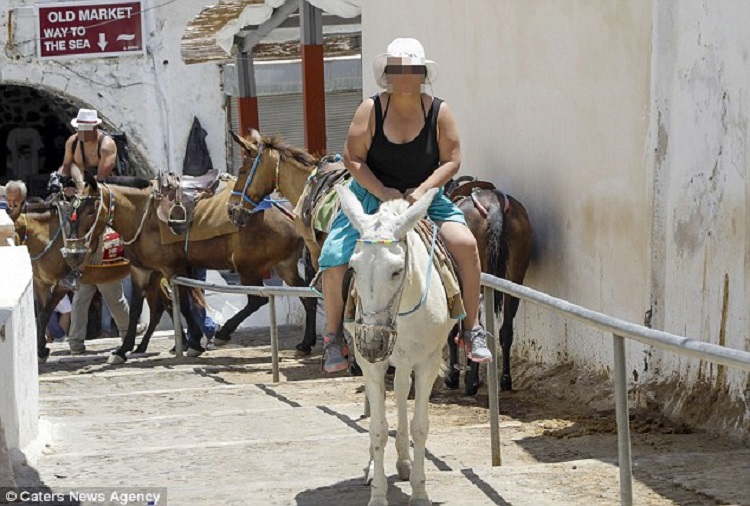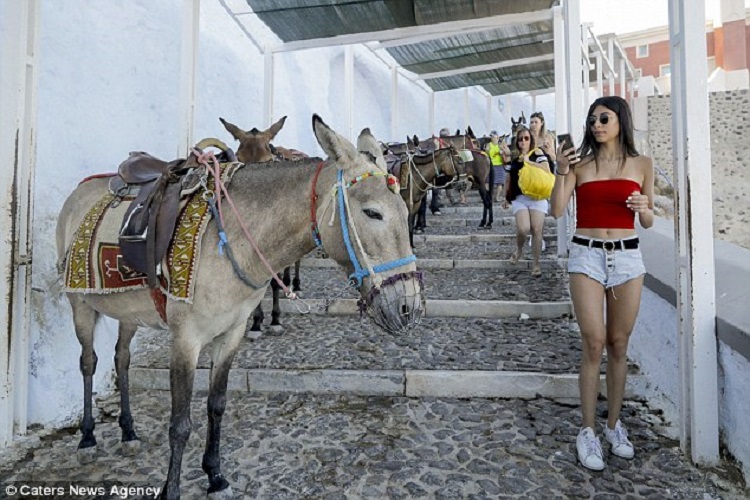The Greek island of Santorini is an increasingly popular tourist destination because of its idyllic white houses and picturesque setting.
Their busiest months run from May to October with up to five cruise ships bringing as many as 1,200 tourists each day.
Because of Santorini’s hilly terrain, donkeys are normally used to transport people in places that vehicles cannot go such as the stepped areas in the capital Fira.
However, the influx of tourists has introduced a unique problem for the locals: fat tourists that eventually end up injuring the poor donkeys.
To remedy the problem, locals have taken to cross-breeding donkeys with mules to produce stock that is strong enough to handle the heavier loads. Mules are bigger, stronger, and have more stamina and these are the characteristics that locals are hoping the cross-bred donkeys would acquire.
A Help the Santorini Donkeys spokesperson said that donkeys shouldn’t carry more than 20% of their own body weight but there is no mechanism to impose the weight limit.
Overweight tourists are just part of the problem. Seeking to cash in on the swarms of tourists, donkey owners often work the animals to the ground by having them work seven days a week with little rest, shelter, or water, and in temperatures that can reach as high as 86F.
Ill-fitting saddles also chafe the skin enough to cause open wounds and inflict injuries on the animals when forced to carry heavier loads. When they’re not carrying tourists, the donkeys are being used to transport building materials or heavy bags of trash.
Christina Kaloudi, 42, migrated to Santorini from Athens 10 years ago and has seen first-hand how obese tourists have increasingly become a problem. She put up the Santorini Animal Welfare Association in order to help the overworked donkeys.
Santorini officials had signed an international code of practice for working equines back in 2008 alongside the UK Donkey Sanctuary. However, the agreement means little without an enforcement mechanism in place. Working conditions for the donkeys haven’t improved much since except for good owners who choose to follow the code.
According to Kaloudi, some owners keep working the donkeys to the hilt and when they can no longer perform, they are left outside to die or are pushed off a cliff.
Kaloudi added: “Donkeys are very resilient animals and will keep going for as long as they can, so when they come to me in this state, I have the utmost respect for them.
“I have between 15 and 25 donkeys here, but I am glad that people bring them to me as they would normally be left to die or killed because owners don’t want to pay to have them put to sleep. They know my shelter is here.
“For some their final walk is to the shelter because they are just hours from death.
“A lot of people just don’t care about the welfare of the animals but with social media, it’s a lot harder for the locals to hide the abuse.
“We don’t want to stop the locals making a living or using donkeys on the steps but to look after them in a fair and humane way.”
The UK-based Donkey Sanctuary has also chimed in on the problem: “The Donkey Sanctuary does not actively promote the use of donkeys and mules in any form of tourism.
“The Donkey Sanctuary has expressed concerns about the current working conditions and practices of many of the donkeys and mules working on the island of Santorini, with continued challenges around enforcement of regulations and issues such as lack of shelter from the sun, lack of water, excessive working hours and overloading.”


